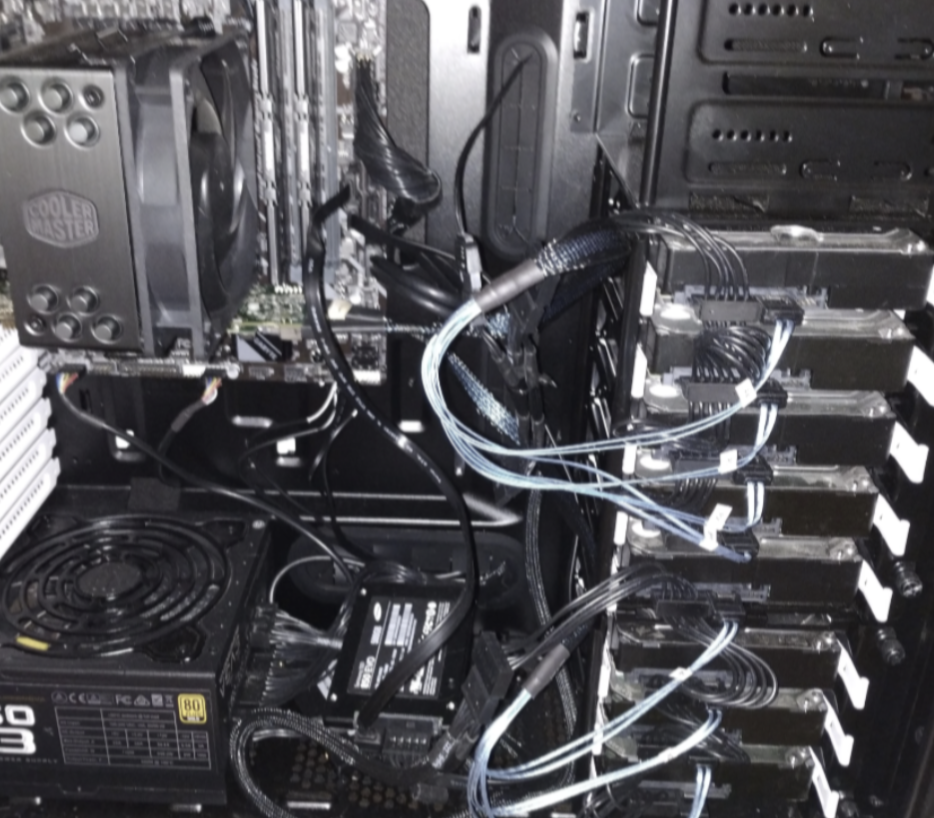Weekly Share-Your-Build Post
This is part of a (semi-)weekly series of Share-Your-Build Post threads for everyone to share their builds, discuss different server solutions, and share knowledge and resources! Please be polite and helpful to beginners just getting started out, and we want to be as welcoming as we can to newcomers to this community.
Common info to share can include:
- Plex server make/model
- CPU and GPU info
- Storage solution info
- Plex add-on info (Radarr, Sonarr, Docker, etc.)
- other configuration info
Anyone who posts good starter guides, FAQs, and/or wikis may get their links added to the sidebar so the rest of the community can benefit!
Cheers!
Just added 5x18TB Seagate Ironwolf NAS (CMR) drives to my build.
it’s a retired desktop/gaming pc
- Ryzen 5600x
- Radeon 580 gpu
- 3x4tb zfs raidz1 array
- 5x18tb zfs raidz1 array
- 48gb RAM (to be upgraded)
- Plex, jellyfin (and jellyvue) both behind a reverse proxy, other non related services like vaultwarden etc
- Sonarr/radarr/lidarr/jackett via docker using private trackers, running mostly linuxserver.io docker images
- Proxmox
Edit: along with the 5 new drives, switched to a fractal R5 case to accommodate the amount of hard drives
I’ve been having a hard time finding an r5 case (I haven’t looked real hard, but when I have they’ve been out of stock or very expensive)
Oh! I’m mixing this up with the r7 XL for it’s “storage layout”.
Yeah the r7 xl is crazy, and pretty pricey.
A little overkill for my needs at this point in time as well. R5 is midtower and I didn’t feel like going full tower.
I switched from a rack mount to an R5 case and it’s a lot more practical.
Agreed. Rack mount is cool but I don’t have the space for that
My Plex server using parts from 2013
- i7 3770s
- H61 mobo
- 16GB RAM
- Rosewood HIVE PSU
- 7TB HDD storage
- 256GB SSD storage
- upgraded PCie network card
It was an old business PC that used a celeron which didn’t handle Plex streams very well but I upgraded the H61 BIOS to accept 3rd gen i7 CPUs and the 3770s does a great job even with multiple streams going at once.
Besides Plex it’s basically my seedbox and I have F@H running on 2 cores 24/7 to make use of the fact that it’s always on. It’s such a simple machine but I love it.
Server
- Intel i3 12105
- 16gb DDR4
- Unraid OS
- 5x8tb (Seagate baracuda)
- 1x8tb (Seagate IronWolf) parity
- 1x500gb M.2 SSD (Cache)
- LSI HBM 8i card (in IT mode)
Raspberry pi4 to run XTeve
Also running an LSI 9211-8i P20 in IT mode - you pick that up from theartofserver or flash yourself?
chassis: supermicro 36 disk hot swap
CPU: i5-13400 w/ quick sync
RAM: 64GB
OS: unraid
docker: usual *arrs, overseerr, other stuff
Parity: 2x 14TB
Array: 17 various disks, 150 TB total capacity
SSD Pool 1: 2TB for download/write cache
SSD Pool 2: 1TB for docker and plex metadata
i5-9400
2 x 8GB DDR4
128 GB SSD (OS)
500GB SSD (apps, downloads, transcodes)
8 x 8TB HDDs (24TB RAID-5, 16TB RAID-0)
Adaptec ASR-5805 RAID card
Fractal Define R5 case
Windows, Plex, Radarr, Sonar, Tdarr, qBit
This is primarily a file server for my main Plex server that has a Nvidia 1660s and i9-10850K.

yay pics!
- Plex docker running in unraid
- 10th gen i7 salvaged out of a Dell optiplex. Using the chips qsv to transcode
- slowly replacing all my 10 year old 2tb drives with 16tb exos
- various containers darrs unmanic for x265 conversion
- have the darrs watching for Plex watchlist which means I don’t have to run ombi anymore.
At first, I was running in a Raspberry Pi 4B 8GB model, and it ran fine but my ISP provided router is terrible and is also behind a CGNAT, so for it to work was always a pain.
Now, I’ve picked up a VPS, it’s running:
- 4 vCPUs of an Xeon E5-2695 v4
- 4GBs of RAM
- 100GB of NVMe SSD
And the media is still in my raspberry pi, running a 4TB HDD, and is connect to the VPS via a samba share folder.
How much is that VPS costing you monthly?






